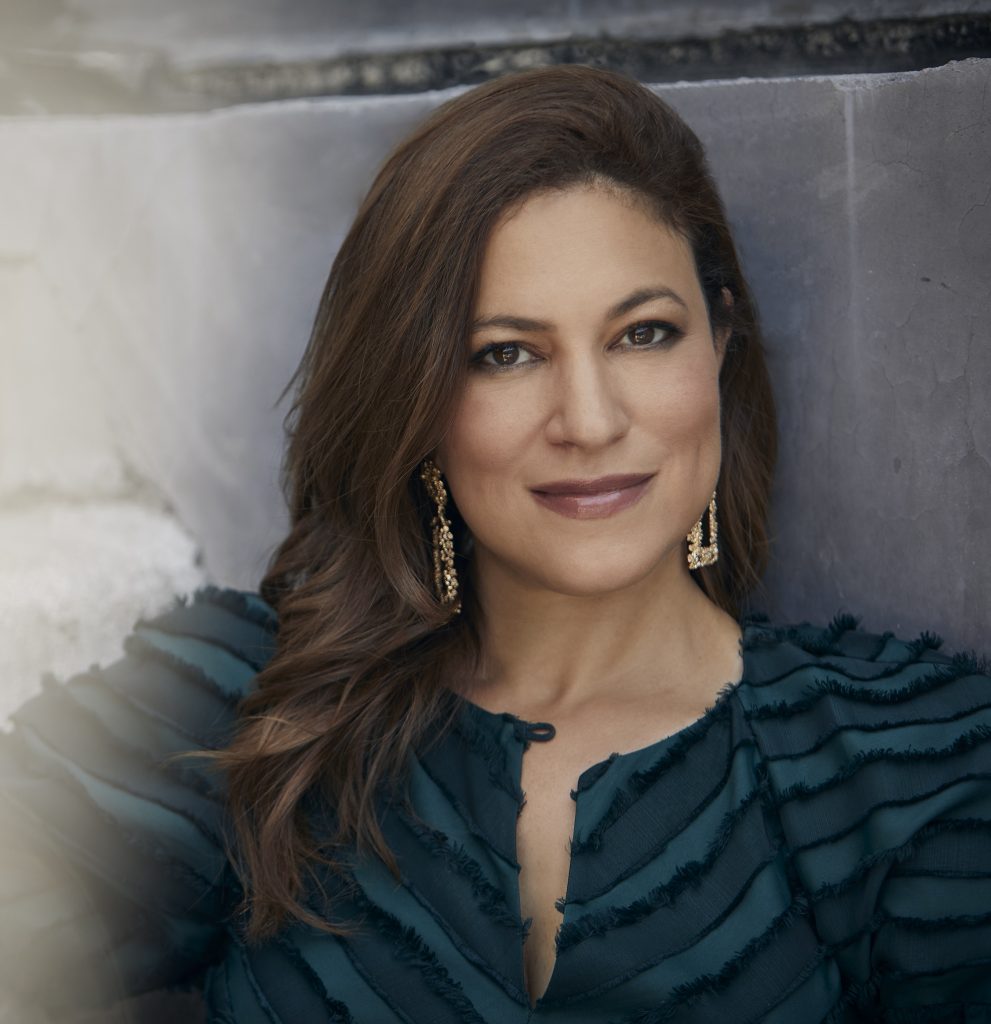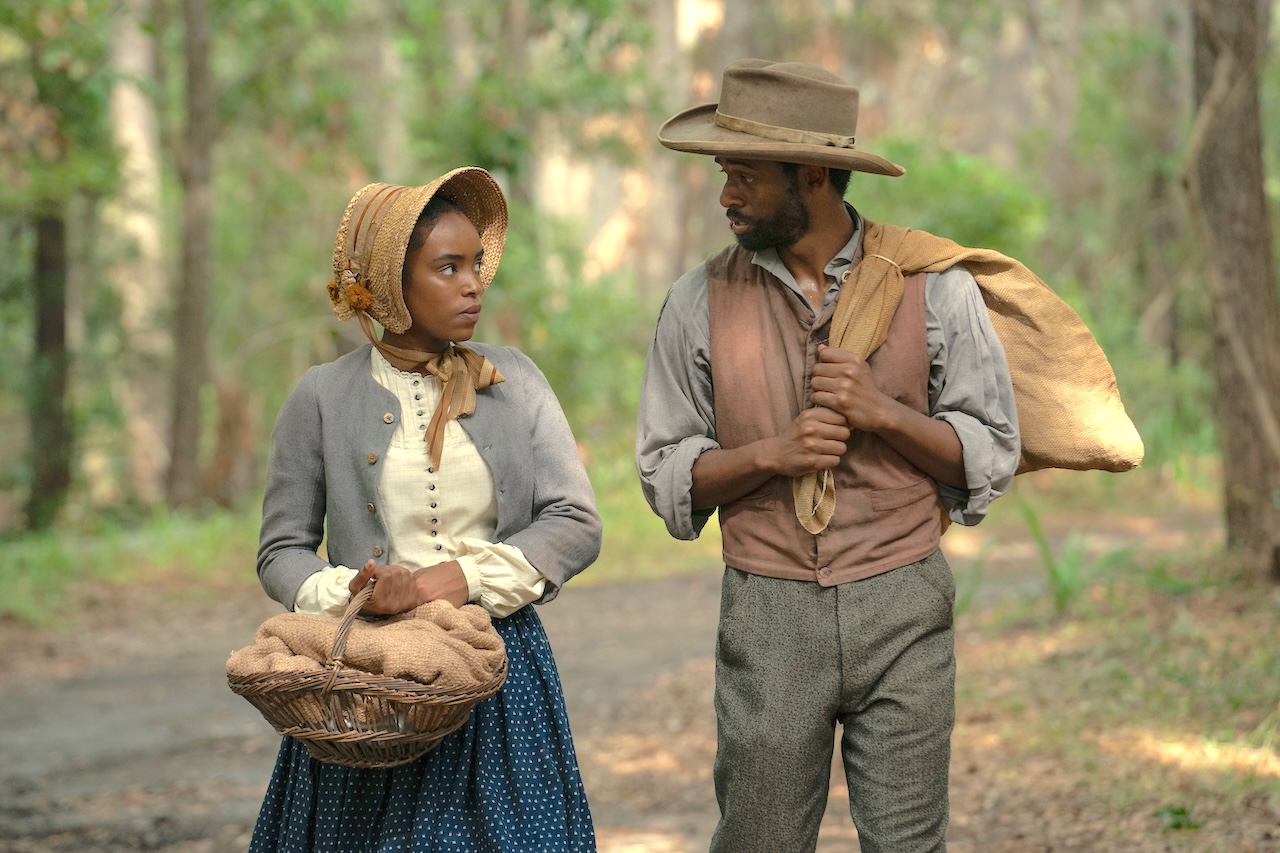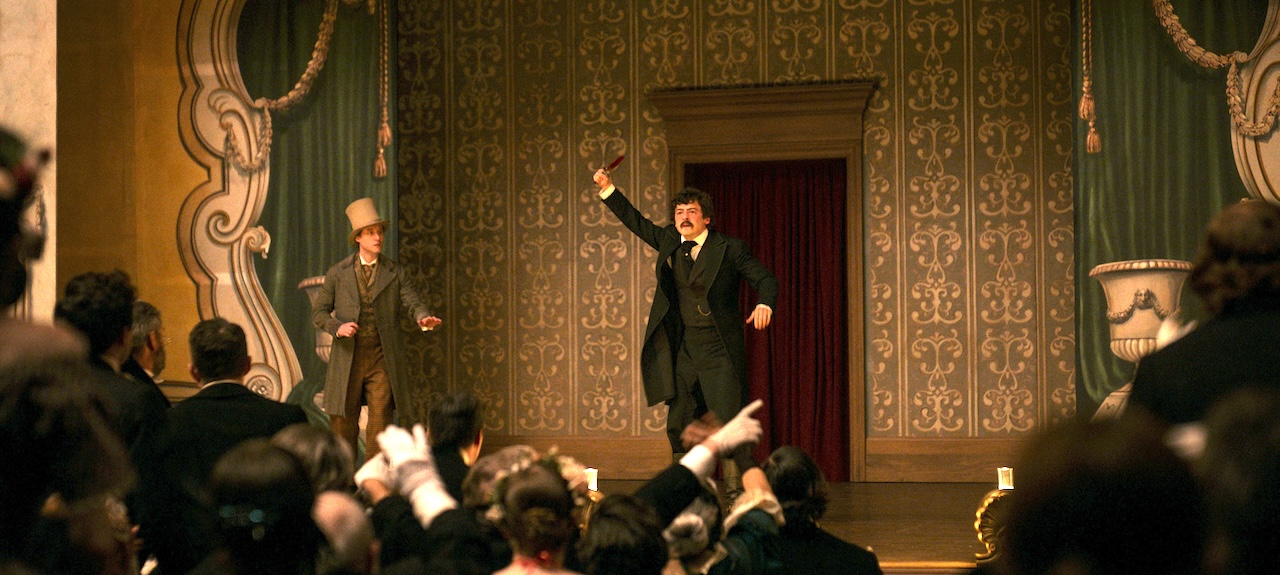Like many films and television shows adapted from existing formats, Manhunt was adapted from the popular novel Manhunt: The 12-Day Chase For Lincoln’s Killer by James L. Swanson.
It was a serendipitous occasion for screenwriter Monica Beletsky (Fargo) who initially approached Apple TV with an idea for a television show about Abraham Lincoln’s assassination. Later, the producers brought her Swanson’s book for reference, so Manhunt was a “reverse adaptation” process of sorts.
Beletsky’s unique way into the story was by stumbling across the historical figure Edwin Stanton (Tobias Menzies) who was the Secretary Of War at the time. “It’s not a position we have anymore. It was before the FBI and the Pentagon were formed, and so the War Department encapsulated both of those giant institutions,” says Beletsky.
“What fascinated me was that we had no living president in office from the time that Lincoln (Hamish Linklater) was assassinated until the next morning when Andrew Johnson (Glenn Morshower) was sworn in. Everything fell on Stanton during that time and also during the manhunt,” she continues.

Monica Beletsky. Photo by JSquared Photography
So, Beletsky focused her story through Stanton’s eyes. She later read and acquired Swanson’s book which became an invaluable research tool. “It was a great jumping off point for Booth’s (Anthony Boyle) journey, the assassination night, and for Booth’s end,” she mentions.
Historical dramas risk being dry, textbook accounts of events. “What excited me, and hopefully will excite the audience, is that I’m telling the story more focused on the why and how. Why do people do the things that they do? How did these things occur?And so you’re really inside the story as opposed to memorizing key facts.”
Maintaining The Legacy Of Abraham Lincoln
By shifting the focus of the story from Lincoln’s vision for the country during the Reconstruction Era to Stanton’s hunt for Booth, Beletsky had to ensure that the assassination retained a key focus of her series.
“The structure of Manhunt really interested me. It was braiding a cat and mouse detective story – Stanton being the cat to Booth’s mouse. You have two people with very different ways of thinking and you’re engaged in the story partly because you want to know how they’re going to outsmart each other.”
Beletksy also wanted to show the “psychology of loss and grief and avenging a friend’s death,” so Lincoln could maintain a constant presence in the story. “Stanton is in a position where he knew very clearly where Lincoln stood on certain policies. For example, what should we do with the Confederates now that the war is over? He knew how Lincoln felt about that and he was a little bit more radical about that.”
Stanton honors Lincoln’s memory throughout the series by doing things as Lincoln would have wanted. When he was unsure, he would do what’s right not what’s easy.
Stanton and Lincoln were both lawyers who honored what they could or couldn’t do according to the Constitution.
Mary Simms (Love Simone) who testified against Dr. Samuel Mudd (Matt Walsh) helped Beletsky portray the stakes involved in losing a prominent figure like Lincoln.
“One of the things I learned from James Swanson is that the morning after the assassination when everyone was waiting to see Lincoln’s condition, the people who stayed all night, or were there early in the morning, were majority African American people outside of Petersen boarding house. I think that speaks to the stakes involved in emancipation and what was going to be the fate of freed people and people who weren’t yet free.”

Mary Simms (Lovie Simone) and Milo Simms (Antonio Bell) Photo courtesy of Apple TV+
Simms is a black woman who was owned by Dr. Mudd and later became his servant. Dr. Mudd also helped Booth after he broke his leg after the assassination. “And so, I wanted to know how this woman has the courage to speak in such an intimidating arena.” Much of Simms’ character was fictionalized because there weren’t many historical records of her. “But for me, it was a great opportunity to shine a light on this unsung American heroine.”
Many historians believe that Lincoln’s assassination was designed to change the outcome of the Civil War. Beletsky explains that Confederate General Robert E. Lee had surrendered five days before the assassination. Stanton lacked the means to widely communicate that in time. There was a whistle stop tour of Lincoln’s coffin so people would actually believe he had died.
It was the end of the Civil War, but the political tumult persisted. “It was devastating for the nation to go from celebrations and the relief of not having to send boys to war anymore, to this catastrophic tragedy happening at a time when murder like that was not common. Lincoln left the front door of the White House unlocked for the entire duration of the Civil War.”
“And so, it was not only a shock and a devastation to lose this person who was extremely popular and a great leader, but also, there was the shock of a domestic terror attack that happened in a place where people are supposed to feel safe.”
Structuring The Pilot Episode
The pilot episode of Manhunt sets up the world, characters, and trajectory of the imminent story. It has a unique structure with regular graphics with a countdown to the assassination.
“Everyone knows the assassination is coming so it’s not really a story in the pilot about what is going to happen. It’s more about how did it happen? And why did it happen? When is it going to happen? And so, I feel that I was able to build some suspense in a situation where we already know what’s going to happen.”
Monica Beletsky also meticulously sets up the psychological profiles of Stanton and Booth. “There’s the back and forth about the fact that Booth only had the idea that morning. He had been looking for a way to kidnap or harm Lincoln for some time. But it was being in the Ford’s Theatre, the layout of which he knew well, to collect his mail, and hearing that Lincoln would be there that night, he had his answer. It was a sign from God. It felt like he was being led by a higher purpose and that this was the time and the place to do it,” says Beletsky.

John Wilkes Booth (Anthony Boyle) Photo courtesy of Apple TV+
“For Stanton, I wanted to show that Lee already surrendered five days earlier, so that viewers understood the context of Lincoln going to this play was really his first night out in a long time. We have the context of how this crime occurred in the middle of this feeling of people letting their guards down to enjoy their lives and feeling some joy.”
“The pilot also speaks to the Emancipation. It took years in some instances for some slaves to realize that they’ve been freed. It wasn’t only the physical transmission of this information, but it was also people blocking it.”
“Knowing who testified at the trial needed big emotional payoffs in the finale. So, it needed a strong setup. I had to work backwards to make sure I set up those characters in a way that we would care about and understand the significance of their testimony. That was a challenge,” explains the screenwriter.
Final Thoughts
“The stories that interest me most are about characters who want to hold on and rescue the status quo of their life. But something significant has changed and they are revealing their character through trying to get how they see life working back in the bottle,” ponders Beletsky. She cites Madmen to illustrate. “Don Draper would really love for advertising and cigarettes to be king and to be able to cheat on his wife for as long as he lives. But we see that those three things are changing. And so he’s going to try to keep those things in his life. How does he adapt and what choices does that character make?”
Same with The Sopranos. “Tony’s not much different in the finale than he is in the pilot. But what’s engaging and so brilliant about it is we as an audience want to see what he’s willing to do to stay in control.“
